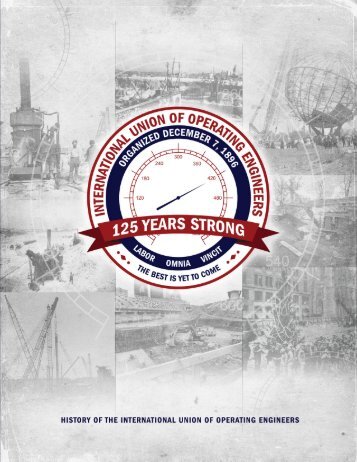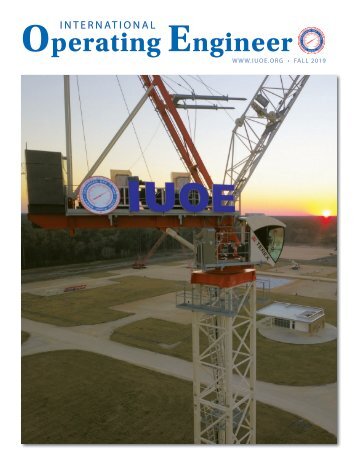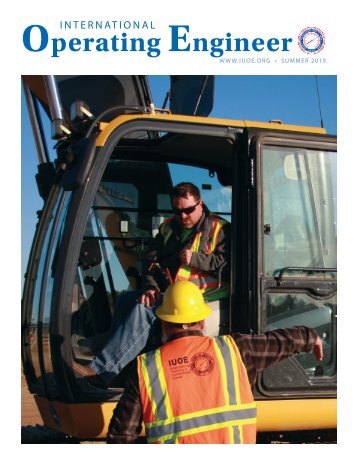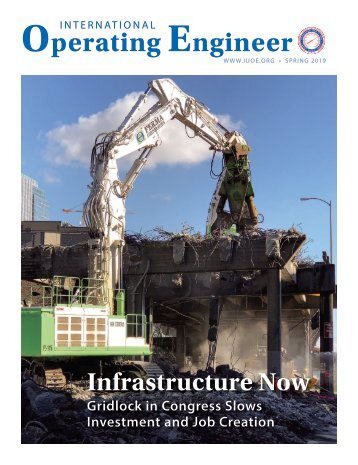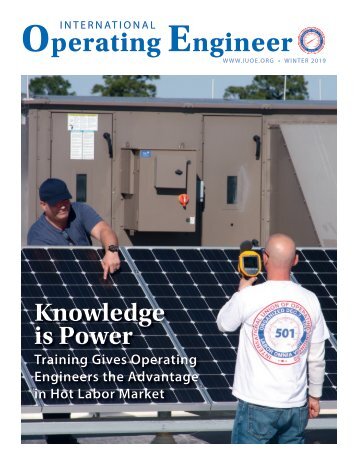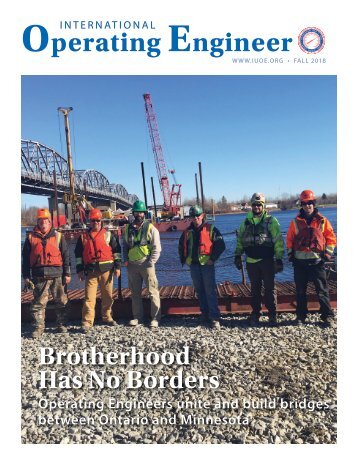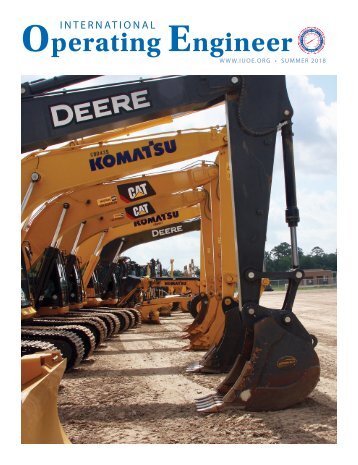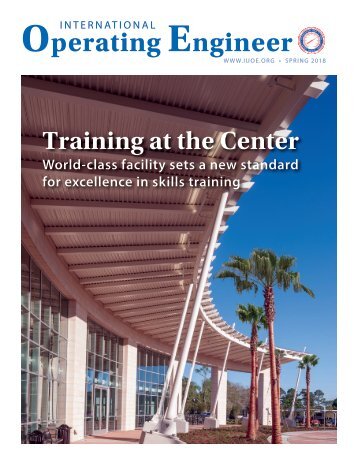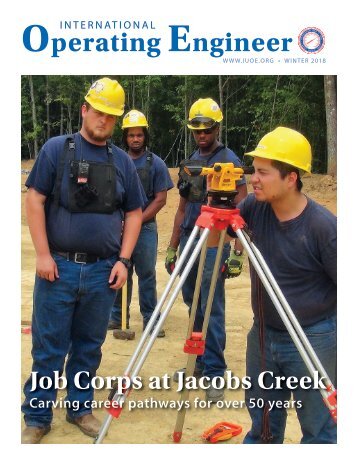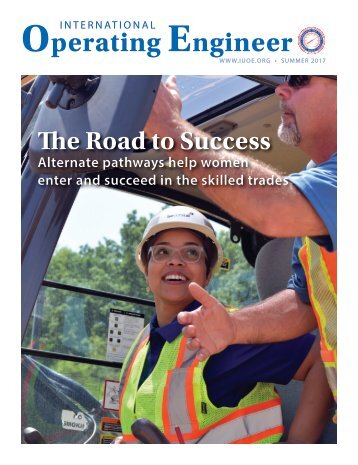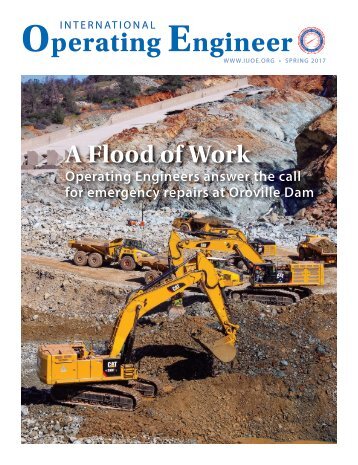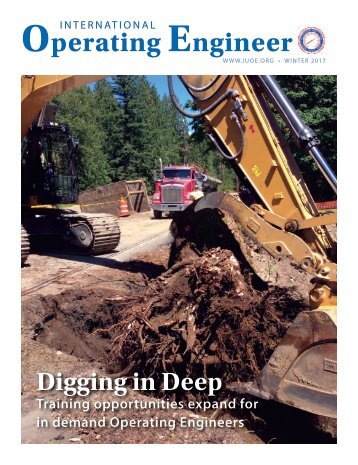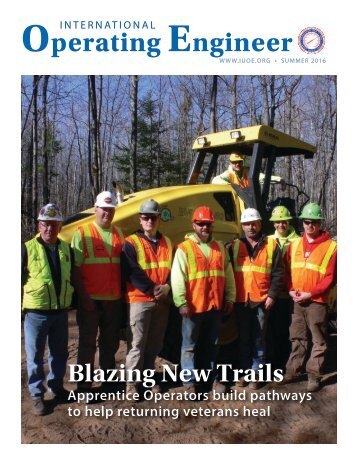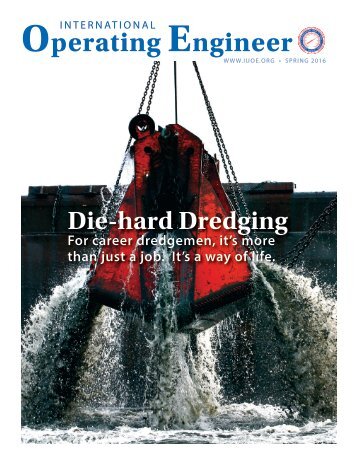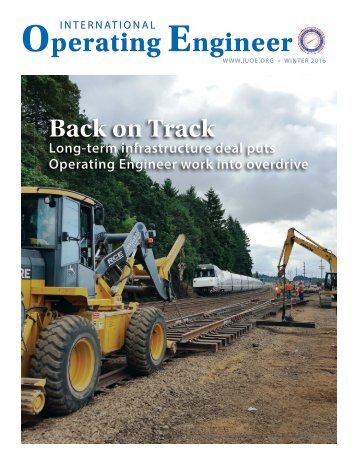125 Years Strong – An IUOE History
- Text
- Wwwiuoeorg
- Vincit
- Omnia
- Engineer
- Convention
- Membership
- Locals
- Operating
- Engineers
INTERNATIONAL UNION OF
INTERNATIONAL UNION OF OPERATING ENGINEERS I.U.O.E. Training & Education PREPARING AN INDUSTRY-BEST WO The I.U.O.E. International Training and Education Center (I.T.E.C.) near Houston, Texas. “Engineers cannot be turned out in a day; they must be developed through precept and practice, by study as individuals and by the organization as a body, until they reach proficiency in their calling and afterwards.” – The International Steam Engineer, July 1902 (First issue of the I.U.O.E. official journal) RKFORCE OF SKILLED ENGINEERS The foundation on which the International Union of Operating Engineers stands has been rebuilt over time and now rests squarely upon unrivaled, superior training of its membership and individuals – apprentices – who seek to enter the industry and the union. As the union celebrates its 125 th anniversary in 2021, it places an unprecedented emphasis on preparing apprentices and upgrading members’ skills through a multitude of internal training and education programs made available to all local unions. But the I.U.O.E. that initially organized in 1896 (as the National Union of Steam Engineers) was far from focused on training its membership or potential candidates for joining its ranks of skilled engineers. To the contrary, throughout the union’s first several decades, it had no official stipulations or edicts for teaching individuals seeking to join the union and learn the trade; the union instead focused almost entirely on improving the collective condition of its experienced member craftsmen. “The attempt to protect the wage of the fully qualified engineer raised the question of controlling the entry of potential engineers,” Professor Garth L. Mangum explains in The Economic History of a Trade Union from 1964. He goes on to question the absence of provisions for apprenticeship in the union’s early constitutions: “If none but ‘competent engineers’ were to be admitted to membership, how was competition of the almost qualified to be met, and what was to ensure union membership once competence was acquired?” Compounding the union’s early disregard of apprentices was the manner the so-called “helpers” were trained within the steamdominated industry. As such, prospective engineers learned the craft while serving as firemen in engine rooms and oilers for equipment operated by journeymen and, therefore, only learned through observing those journeymen at work. During the I.U.O.E. 1905 convention, delegates elected to accept into the union members with engineers’ licenses who were temporarily working as firemen. Subsequently, just before the 1912 convention, Local No. 6 of Kansas City proposed an amendment to the union’s constitution that would admit firemen and oilers, who “by their contact with machinery in the line of duty of the engineers are being educated and taught the science of steam engineering.” The proposal, however, was met with stiff resistance during the convention. “The opposition was in part craft pride,” Professor Mangum concluded, “but it was more the fear that some of the engineer’s work might be taken over by the lower-paid apprentice.” Regardless, delegates adopted the apprenticeship amendment – but the union still did not advocate for a formal apprenticeship program of its own. As learning the trade remained primarily the burden of individual potential engineers, it was not until the mid-1910s that the international union and, even more so, several of its locals began to address the specific needs and concerns of apprentices at the local level. In fact, beginning with the January 1915 issue of its International Steam Engineer journal, the then-International Union PROGRAM FOCUSES ON PIPELINE WORKERS Shortly after the Pipe Line Contractors Association (P.L.C.A.) was established in 1948, the I.U.O.E. and the association negotiated their first National Pipeline Agreement, with safety and productivity as its guiding principles. The Pipeline Contractors Association was founded as a means for various pipeline contractors to encourage safe and efficient practices in pipeline construction, to negotiate labor agreements and to resolve problems commonly encountered in the industry. I.U.O.E. officials recognized and even addressed in mid- 1973 that it was facing a shortage of qualified pipeline engineers and, in that regard, suggested that a pipeline training program should be initiated to the advantage of both the union and the contractors. However, it was not until 1992 that the union established its National Pipeline Training Program through negotiations with the P.L.C.A. on a new National Pipeline Agreement that set up the National Pipeline Training Fund, into which employers initially contributed 20 cents per each hour worked for them by an I.U.O.E. member. The I.U.O.E subsequently developed the first training curricula for the operation of pipeline equipment, and the union’s pilot training program took place beginning September 20, 1992, at the training site of Local No. 324 in Howell, Michigan. The initial program offered a three-week course on sideboom (or pipelayer) vehicle operations and 40-hour courses on operating angle dozers and excavators/backhoes. As the I.U.O.E. celebrates its 125 th anniversary in 2021, its National Pipeline Training Program is open to active members of the union from the United States and Canada and offers courses at two training facilities. The main training site is the International Training and Education Center near Houston, and the second site utilizes the training facilities of Local No. 181 in Boston, Kentucky. LABOR OMNIA VINCIT WORK CONQUERS ALL
- Page 2:
LABOR OMNIA VINCIT WORK CONQUERS AL
- Page 6:
INTERNATIONAL UNION OF OPERATING EN
- Page 10: INTERNATIONAL UNION OF OPERATING EN
- Page 14: INTERNATIONAL UNION OF OPERATING EN
- Page 18: INTERNATIONAL UNION OF OPERATING EN
- Page 22: INTERNATIONAL UNION OF OPERATING EN
- Page 26: INTERNATIONAL UNION OF OPERATING EN
- Page 30: INTERNATIONAL UNION OF OPERATING EN
- Page 34: INTERNATIONAL UNION OF OPERATING EN
- Page 38: INTERNATIONAL UNION OF OPERATING EN
- Page 42: INTERNATIONAL UNION OF OPERATING EN
- Page 46: INTERNATIONAL UNION OF OPERATING EN
- Page 50: INTERNATIONAL UNION OF OPERATING EN
- Page 54: INTERNATIONAL UNION OF OPERATING EN
- Page 58: INTERNATIONAL UNION OF OPERATING EN
- Page 64: INTERNATIONAL UNION OF OPERATING EN
- Page 68: INTERNATIONAL UNION OF OPERATING EN
- Page 72: INTERNATIONAL UNION OF OPERATING EN
- Page 76: INTERNATIONAL UNION OF OPERATING EN
- Page 80: INTERNATIONAL UNION OF OPERATING EN
- Page 84: INTERNATIONAL UNION OF OPERATING EN
- Page 88: INTERNATIONAL UNION OF OPERATING EN
- Page 92: INTERNATIONAL UNION OF OPERATING EN
- Page 96: INTERNATIONAL UNION OF OPERATING EN
- Page 100: INTERNATIONAL UNION OF OPERATING EN
- Page 104: INTERNATIONAL UNION OF OPERATING EN
- Page 108: INTERNATIONAL UNION OF OPERATING EN
- Page 112:
INTERNATIONAL UNION OF OPERATING EN
- Page 116:
INTERNATIONAL UNION OF OPERATING EN
- Page 120:
INTERNATIONAL UNION OF OPERATING EN
- Page 124:
INTERNATIONAL UNION OF OPERATING EN
Inappropriate
Loading...
Mail this publication
Loading...
Embed
Loading...
International Operating Engineer
HEADQUARTERS
INTERNATIONAL UNION OF OPERATING ENGINEERS (IUOE)
1125 17th Street, NW
Washington, DC 20036
202 429-9100
CONTACT US
Send us an email here.
©2010 International Union of Operating Engineers. All Rights Reserved.|Terms Of Use|Privacy Statement|Sitemap

